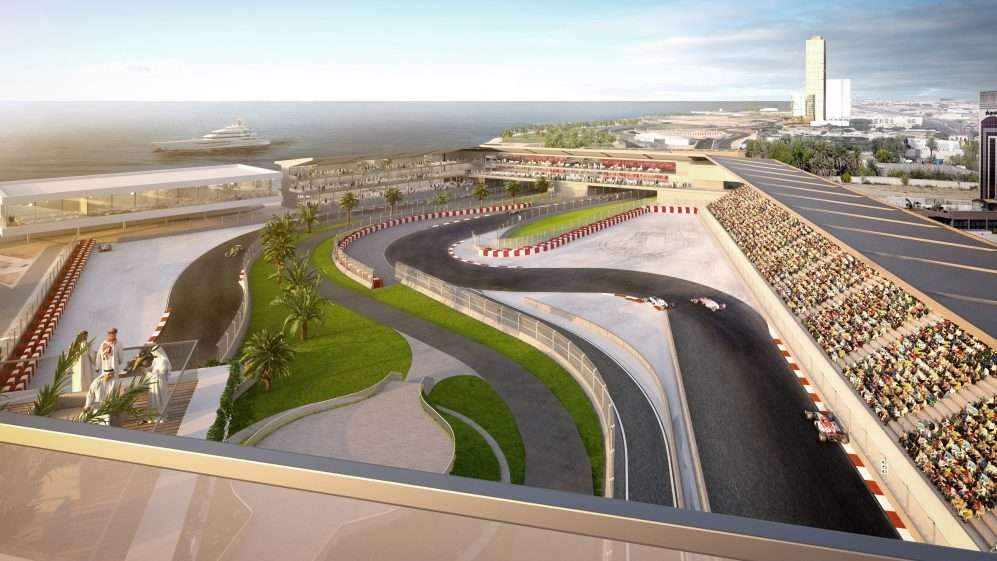The engineering challenge in the design of the Jeddah Corniche Circuit for the establishment of Formula 1,
An exceptional modular circuit has been designed in Jeddah,
which is a different kind of street track, and something the world has never seen before.
The reclaimed land north of the coastal city of Jeddah was devoid of buildings,
which allowed the designers the freedom to create something unique.
It resulted in the longest and fastest street circuit in Formula 1 history.
Jeddah Circuit is 6,175 km long and is one of the longest circuits in the calendar.
The location on the Jeddah Corniche was special.
The Corniche area is located on the Red Sea, 12 km north of the center of Jeddah.
It is a narrow coastal strip of reclaimed land.
It is a mixture of asphalt parking lots, open spaces and lakes and provides a stunning backdrop.
One of the attractive aspects of the area was the long and wide roads that the team felt could fill to create a unique street circuit in the short time frame.
That’s while ensuring a completed track is required for a race in late 2021.

The engineering challenge in the design of the Jeddah Corniche Circuit for the establishment of Formula 1
The 6,175 km Jeddah circuit is considered one of the longest circuits on the calendar,
as it is not spread over a vast area but extends back and forth over a narrow strip of land parallel to the coast.
Heading away from the starting line, the first corner is the left-right twist,
then from Turn 4 onwards.
Then the track opens up in a series of substitutions that will penalize the smallest of mistakes,
and after a short straight time, we approach Turn 13.
The return leg along the beach is similar to the opening sequence of bends,
but even from the back seat of the slow-moving wagon, you get the feeling this is going to be an incredibly fast part of the racetrack.
The average speed in the 27 turns is estimated at more than 250 km/h, making it the fastest street track to host a Grand Prix.
The circuit is a challenge for drivers
It was a remarkable achievement to establish a new department in record time,
while a larger project of 2023 is being implemented in Qiddiya (near the capital Riyadh(.
There were only 12 months left to build a completely new facility,
And a road was drawn around the shallow lagoons on the north coast of Jeddah.
Whereas the site gave the track designers the freedom to create a private test for drivers,
This circuit contains the atmosphere of an urban setting.
The space works very well, but depending on the area and runoff,
it would have been a hindrance to increasing the speed of the corners.
But the designers managed to create very difficult fast corners, which the drivers loved.
There are also sections with walls close to the edge of the circle,
these corners really need to be focused to avoid making a mistake,
but very useful for those who can master all 27 corners.

Climate Challenge
The climate in Jeddah is not only hot, but also humid,
due to its coastal location, and these are the climatic conditions that teams and drivers are used to encountering in Sepang, Malaysia.
Right on the beach, the sea breeze provides a respite from the intense sun,
which is why the promenade that runs along the coast of the city is always bustling with families at sunset, enjoying the cool night air.
Jeddah served for centuries as a gateway for pilgrims traveling to the holy city of Mecca,
due to its privileged location on the western coast of Arabia.
This rich history becomes clear when we explore the streets and buildings of old Jeddah,
now protected as a UNESCO World Heritage Site.


 العربية
العربية